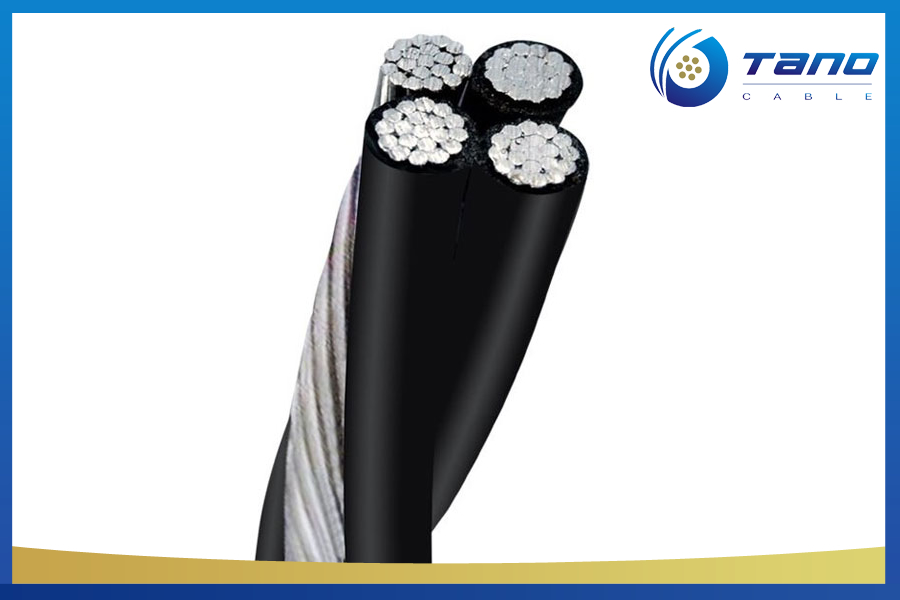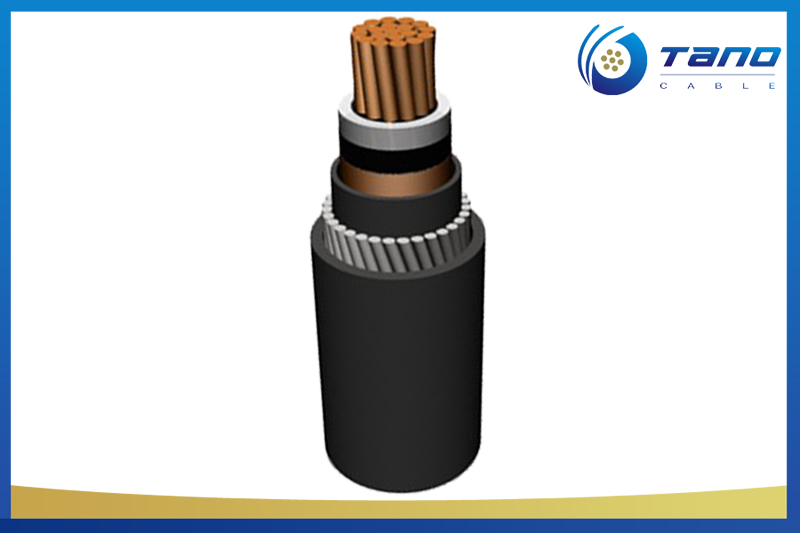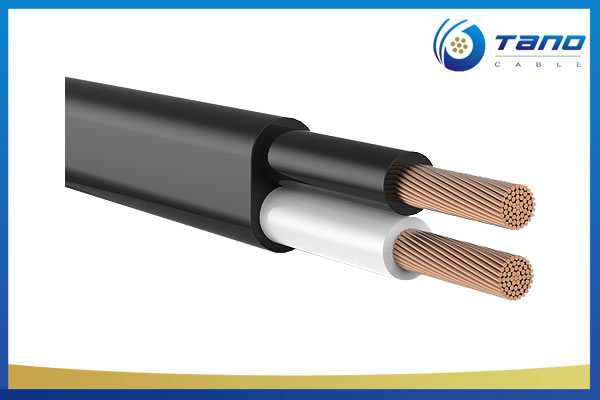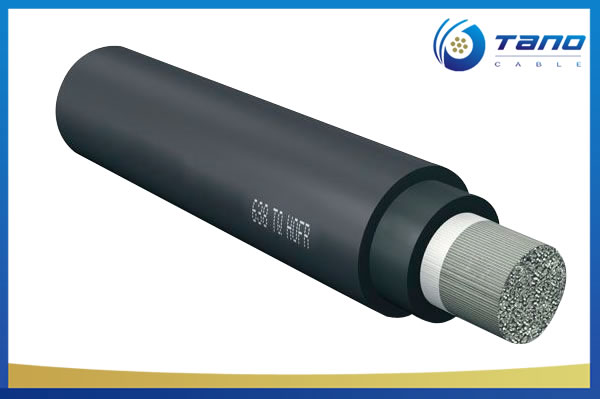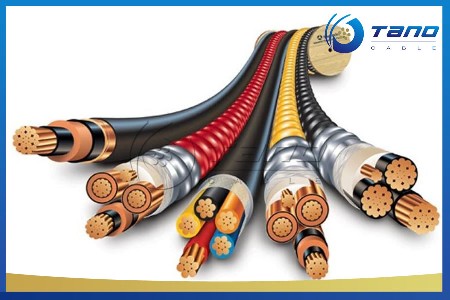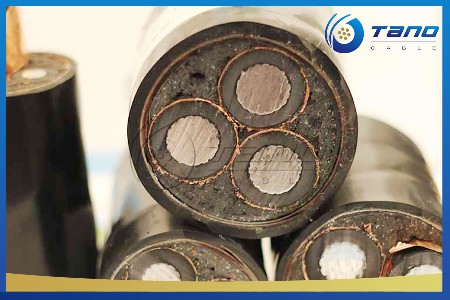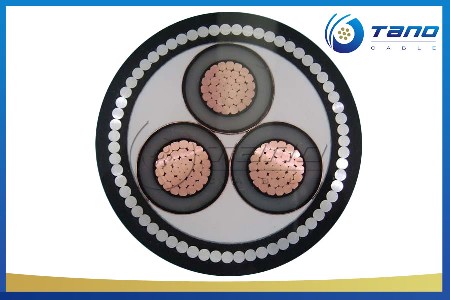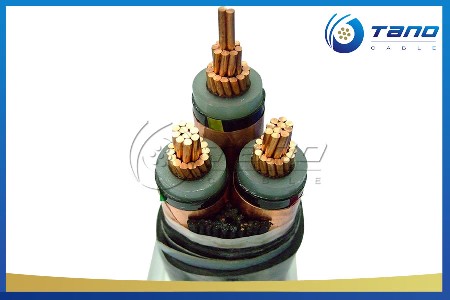APPLICATION OF mv 3 core 50mm power cable bs standard
MV 3 core 50mm power cable are designed for distribution of electrical power with nominal voltage Uo/U ranging from 3.6/6.6KV to 19/33KV and frequency 50Hz. They are suitable for installation mostly in power supply stations, indoors and in cable ducts, outdoors, underground and in water as well as for installation on cable trays for industries, switchboards and power stations.
STANDARD OF mv 3 core 50mm power cable bs standard
BS 6622
CONSTRUCTION OF mv 3 core 50mm power cable bs standard
Conductor: Plain annealed copper or aluminum complying with IEC 60228/BS 6360. Copper conductors shall be stranded (class 2) and aluminum conductors shall be either solid or stranded (class 2).
Conductor Screen: Extruded layer of semi-conducting cross-linkable compound is applied over the conductor and shall cover the surface completely. The minimum thickness is 0.3mm and the maximum resistivity shall not exceed 500 Ohm-m at 90°C.
Insulation: Insulation is of cross-linked polyethylene compound XLPE (GP8) conforming to BS 7655-1.3 or EPR (GP7), conforming to BS 7655-1.2.
Table 1. Insulation Thickness
|
Nom. Cross |
Insulation Thickness at Nom. Voltage |
||||
|
Section Area |
3.8/6.6KV (Um=7.2KV) |
6.35/11KV (Um=12KV) |
8.7/15KV (Um=17.5KV) |
12.7/22KV (Um=24KV) |
19/33KV (Um=36KV) |
|
mm² |
mm |
mm |
mm |
mm |
mm |
|
70 – 185 |
2.5 |
3.4 |
4.5 |
5.5 |
8 |
|
240 |
2.6 |
3.4 |
4.5 |
5.5 |
8 |
|
300 |
2.8 |
3.4 |
4.5 |
5.5 |
8 |
|
400 |
3 |
3.4 |
4.5 |
5.5 |
8 |
|
Above 500 |
3.2 |
3.4 |
4.5 |
5.5 |
8 |
Insulation Screen: Extruded layer of semi-conducting cross-linkable compound is applied over the insulation. The extruded semi-conducting layer shall consist of bonded or cold strippable semi-conducting compound capable of removal for jointing or terminating. As an option, a semi -conducting tape may be applied over the extruded semi-conducting layer as a bedding for the metallic layer. The minimum thickness is 0.3 mm and the maximum resistivity is 500 Ohm-m at 90°C. The screen is tightly fitted to the insulation to exclude all air voids and can be easily hand stripped on site.
Inner Covering & Fillers: For Power Cable with a collective metallic layer or Power Cable with a metallic layer over each individual cores with additional collective metallic layers, semi-conducting inner covering and fillers shall be applied over the laid up cores. The inner covering is made of non hygroscopic material, except if the cable is to be made longitudinally watertight. The inner covering shall be extruded or lapped. The approximate thickness of extruded inner coverings is given in Table 2.
Table 2. Approximate Thickness Of Extruded Inner Coverings
|
Fictitious Diameter Over Laid Up Cores |
Approx. Thickness of Extruded Inner Covering |
|
|
mm |
mm |
|
|
> |
< |
|
|
- |
25 |
1 |
|
25 |
35 |
1.2 |
|
35 |
45 |
1.4 |
|
45 |
60 |
1.6 |
|
60 |
80 |
1.8 |
|
80 |
- |
2 |
Metallic Layer: The metallic layer shall be applied over each core or applied as a collective screen. The metallic screen shall consist of either copper tapes or a concentric layer of copper wires or a combination of tapes and wires. The metallic layer provides an earth fault current path, capable of withstanding fault current to earth of 1000A for one second at maximum temperature 160°C. Copper wires are applied over the conducting water blocking layer with a minimum diameter of 0.5mm. And over the copper wires, copper tape with minimum thickness of 0.1mm can be applied helically with overlap. Total cross section of copper wire screen is shown in table 3.
Table 3. Minimum Total Cross Section Of Copper Wire Screen & DC Resistance Of The Screen
|
Nominal Cross-Section |
Minimum Cross-Section |
DC Resistance of the Copper Wire Screen |
|
Area of Cable |
of Copper Wire Screen Area |
|
|
mm² |
mm² |
mm |
|
up to 120 |
16 |
1.06 |
|
150-300 |
25 |
0.72 |
|
400-630 |
35 |
0.51 |
Separation Sheath (for armored cable): The separation sheath comprises a layer of extruded PVC, PE or LSZH. The nominal thickness is calculated by 0.02Du + 0.6mm where Du is the fictitious diameter under the sheath in mm. The nominal separation sheath thickness shall not be less than 1.2mm.
Armour (for armored cable): The armor consists of galvanized steel wire applied over the inner covering with diameter specified as in Table 4.
Table 4. Armour Wire Diameter
|
Fictitious Diameter Under the Armour |
Armour Wire Diameter |
|
|
mm |
mm |
|
|
> |
< |
|
|
|
25 |
1.6 |
|
25 |
35 |
2 |
|
35 |
60 |
2.5 |
|
60 |
- |
3.15 |
Over Sheath: Overall sheath comprises a layer of extruded either PVC type 9 conforming to BS 7665-4.2 or MDPE type TS2 conforming to BS 7655-10.1; LSZH can be offered as an option. The oversheath is normally black in color. When a DC voltage test is to be performed on the oversheath, a semi-conducting layer such as graphite coating shall be applied over the surface of the extruded oversheath. The nominal oversheath thickness is calculated by 0.035+D where D is the diameter immediately under the oversheath in mm. For Power Cable with the oversheath not applied over the armor, the nominal oversheath thickness shall not be less than 1.4mm. And for Power Cable with oversheath applied over the armor, the nominal oversheath thickness shall not be less than 1.8mm.
Service Life: 30years
PHYSICAL PROPERTIES OF mv 3 core 50mm power cable bs standard
Operating Temperature: up to 90°C
Temperature Range: -5°C ( PVC sheath ); -20°C ( PE sheath )
Short Circuit Temperature: 250°C (short circuit duration up to 5 seconds)
Bending Radius: 15 x OD
Table 5. Nominal/Operation/Test Voltages
|
Rated Voltage Uo/U |
Operating Voltage (Um) |
Testing Voltage (rms) |
|
3.8/6.6KV |
7.2KV |
15KV |
|
6.35/11KV |
12KV |
25.5KV |
|
8.7/15KV |
17.5KV |
35KV |
|
12.7/22KV |
24KV |
51KV |
|
19/33KV |
36KV |
76KV |

